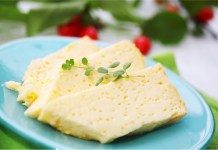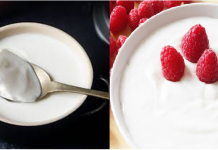Coming from a South Indian family makes you so familiar with ragi that you’d almost shun it as a regular, not-so-great food from your kitchen. Finger millet or ragi has been a very sought after choice in many households. Though, for generations, ragi has been present in Indian kitchens, it has sadly ended up being an unappreciated hero. And with so much hype of the other millets, this one is somehow ignored! Well, for all those of you who believe ragi is nothing but another rural staple, you’d be surprised at the benefits it brings to you. What makes ragi so good? Why should you consider having it? What sets it apart from the other millets? Well, this millet variety is packed with goodness and offers oodles of benefits including weight management. Read on to find out more about ragi and how you can conveniently include it in your everyday diet.
Superpowers of ragi:
Powerhouse of calcium: Ragi is one of the very few vegan sources of calcium and the content is higher than any other cereal. So, osteoporosis is not even getting close to you with this millet. Since ragi is also recommended for children, including it in their diet will ensure stronger bones and teeth in their growing up days.
Fiber rich: Ragi has more dietary fiber as compared to rice and other grains. This makes ragi a great aid for digestion related problems. With ragi you also avoid overeating as it helps you stay fuller for longer thus, curbing appetite too. The polyphenol content in ragi is known to also lower glycemic response in diabetic patients.
Amino Acids: Amino acids like lecithin and methionine are responsible for reducing cholesterol levels as they help the liver get rid of extra fat. Also tryptophan, another amino acid, helps in suppressing appetite.
Iron and Vitamin C: The iron content in ragi is great to treat anemia and improve lower haemoglobin levels. This natural iron source also has some amounts of Vitamin C which helps in faster absorption of iron.
Absolutely gluten free: Unlike all the other cereals, ragi is absolutely gluten free. Meaning people with celiac disease or gluten sensitivity can consume this without any fear.
Aids weight loss: Ragi is extremely filling. It’s fat content is far lower than all the other cereals and this fat is good (unsaturated) fat. Anybody who’s trying to lose weight can pick ragi as a very viable option to replace rice and wheat. Of course, the amino acids are going to help your weight loss plan further.
Natural antidepressant: Studies have shown that consuming ragi on daily basis helps in dealing with conditions like insomnia, anxiety, and depression. Also the amino acids present in ragi work as a natural relaxant. Ragi could also be very beneficial for people with regular migraine attacks. So these were some of the amazing benefits of ragi. Read on to find some interesting recipes of how you could include ragi in your everyday diet.
So these were some of the amazing benefits of ragi. Read on to find some interesting recipes of how you could include ragi in your everyday diet.
You May Also Like: Everything You Need To Know About Indian Keto Diet
Ragi Kanji (Sweet and Salty)
Ingredients:
Ragi flour – 1/4 cup
Water – 1 1/2 cups
For Sweet:
Milk – 1/2 cup
Sugar – as per your taste
Cardamom powder – 1 pinch
For Salty:
Butter milk – 1 cup
Green Chilli – 1 (chopped)
Curry leaves – a few
Mustard seeds – 1/2 teaspoon
Asafoetida – a pinch
Salt – as per your taste
Oil – 1 teaspoon Method:
Method:
- In a pan, mix water with ragi flour. Ensure there are no lumps. Place the pan on medium heat and bring to a boil while stirring continuously.
- After the mixture starts to thicken, lower the flame and stir until the flour is cooked well. (About 5 minutes.)
- Split the mixture into 2 equal portions – one for sweet and the other for salty.
- For sweet: Add milk, sugar, and cardamom powder to 1 portion. Mix well and serve hot. You could also replace sugar with jaggery and add some boiled groundnuts to it too.
- For salty: Cool the mixture. Add salt and buttermilk to it. In a small pan, heat oil and temper mustard, asafoetida, green chillies, and curry leaves. Add this tempering to the buttermilk-ragi mixture. Best when served cold.
Apple Ragi Halwa
Ingredients:
Ragi flour – 4 tablespoons
Apple – 1 large (peeled, cored, and chopped)
Water – 1 cup
Ghee or Oil – 2 teaspoons
Sugar – as per your taste Method:
Method:
- Add the chopped apple in a blender and puree it.
- In a heavy bottom pan on medium flame, mix water with ragi flour. Keep stirring to combine the 2 until it thickens (about 2-3 minutes).
- Add in the apple puree, oil/ghee, and sugar and stir well.
- Let it simmer for about 2 minutes before turning down the flame.
- Garnish with dry fruits and nuts. Serve cold or hot – as desired.
Ragi rotti
Ingredients:
Ragi flour – 1 cup
Cumin seeds – 1/2 teaspoon
Onion – 1 (peeled and chopped)
Green chillies – 2 (finely chopped)
Coconut – 1 tablespoon (grated)
Coriander leaves – a handful (chopped)
Water – as needed
Oil – as needed
Salt – as per your taste
 Method:
Method:
- Add ragi flour, cumin seeds, chopped onions, green chillies, coconut and coriander to a large mixing bowl. Add water little by little to make a soft dough (consistency should not be too dry or runny).
- Divide the entire dough in 5-6 equal portions and set aside.
- Grease a flat pan (tawa) with some oil and pat one portion of the dough on the pan to make a roti. Ensure the dough is evenly distributed.
- Cover the roti and place the pan on medium-high flame.
- Check the roti after a minute and flip it. Add a little oil if needed.
- Repeat on cool pan again for the other rotis. Do not pat roti dough on hot pan as it will not spread.
- Keep covered until served. Serve hot with your favourite chutney.
Note: You could also finely chop and add your favourite veggies (capsicum, carrot, etc)
Ragi Upittu (upma)
Ingredients:
Coarsely ground ragi flour – 1 cup
Oil – 2 tablespoons
Onions – 2 (peeled and chopped)
Ginger – 1 teaspoon (peeled and grated)
Green chillies – 3 (finely chopped)
Curry leaves – 2 strings (separated)
Mustard seeds – 1/2 teaspoon
Cumin seeds – 1/2 teaspoon
Asafoetida – a pinch
Chana Dal – 1 teaspoon
Urad Dal – 1 teaspoon
Groundnuts – 3 tablespoons
Water – 2-3 cups
Coriander leaves – a handful (chopped for garnishing) Method:
Method:
- Soak the ragi for about 30 minutes before dry roasting it. Set aside.
- In a pan on medium flame, heat oil. Add the cumin seeds and mustard seeds and let them crackle. Reduce the heat a little before adding the asafoetida and curry leaves in, followed by green chillies, ginger, groundnuts, urad and chana dal, and fry until groundnuts start to brown.
- Add the chopped onions and fry until they turn pink. Add the ragi flour and saute for about a minute.
- Pour in about 2 1/2 cups of water, salt to taste, and bring to a boil. Add more water if needed and stir occasionally.
- Reduce the flame and cook for another 2 minutes.
- Garnish with coriander leaves and serve hot.
You May Also Like: This Is Why Intermittent Fasting Is So Awesome!
Ragi Ladoo
Ingredients:
Ragi flour – 1 cup (roasted)
Jaggery – 1/2 cup (powdered)
Coconut – 1 tablespoon (desiccated)
Ghee – 1/4 cup
Cardamom powder – a pinch
Method:
- Add roasted ragi flour and ghee in a pan and mix them together for about 5-7 minutes. Keep the flame on until the 2 combine well then turn it off.
- Add cardamom powder and jaggery. The jaggery needs to be added while the mixture is still warm.
- Mix everything well and make ladoos out of it. Serve hot or cold. You could also add some nuts for added crispiness.
Ragi is indeed a super millet and one can reap so many benefits out of it. We hope that by now, you’re strongly considering including it in your everyday diet. Ragi is also versatile and can be used in multigrain rotis, cookies, and also cakes. Give ragi a shot, we guarantee you wouldn’t be disappointed at all! If you like this article then don’t forget to hit the like and share button. Share your thoughts with us in the comments section below. Until next time – stay happy, eat healthy!


 Traqade
Traqade
































[…] https://www.gympik.com/articles/7-super-wow-benefits-of-ragi-and-how-to-consume-it/ […]
Add when not consume also for the benefit of all concerned!
I think it will be difficult to digest for people with kidney problem because of the high calcium content
Sooooo, does this mean it creates bloating or gas? Please do tell!
[…] It’s a very nutritious drink, it has various health benefits as it is rich in protein and packed with amino acids like Eleusinian, tryptophan, cysteine, methionine, which are not commonly found in other grains, which helps as a natural relaxant. Studies also have shown that if one consumes ragi on daily basis it helps in dealing with conditions like insomnia, anxiety, and depression and people having regular migraine attacks. Source https://www.gympik.com/ […]
[…] Ragi Oats Ladoo, a tasty and healthy sweet rich in Proteins, Fibers and Calcium made with dates that are a source of natural sweetness and can be eaten by those who are diabetic. […]
Very informative article. Is Ragi good for Pregnant Woman.?
can CKD MILD PATIENTeat Ragi
I roast little ragi , cool it ,grind it & take it adding water & salt like sattu..
nicee one i always drink ragi malt everyday
Uncover the hidden gems of heart of Kyrgyzstan Osh City, where the Osh State University International Medical Faculty (osuimf) stands as a testament to academic excellence. Amidst the breathtaking backdrop of the Fergana Valley, delve into the intersection of modern education and ancient history.
Elevate your fashion with the allure of Kundan set from Jewelgalore. Explore our diverse range of beautifully crafted pieces, each designed to make a statement and celebrate the cultural richness of Pakistan.
Shalamar Hospital, the premier the cancer hospital in Lahore , is dedicated to providing comprehensive oncology services, ensuring the well-being of our patients in their battle against cancer.
Ragi has become a staple in my diet due senior assisted living to its numerous health benefits. It’s packed with calcium, fiber, and antioxidants, making it great for bone health and digestion. I love incorporating it into porridges, smoothies, and even baking. It’s such a versatile, nutrient-dense superfood!